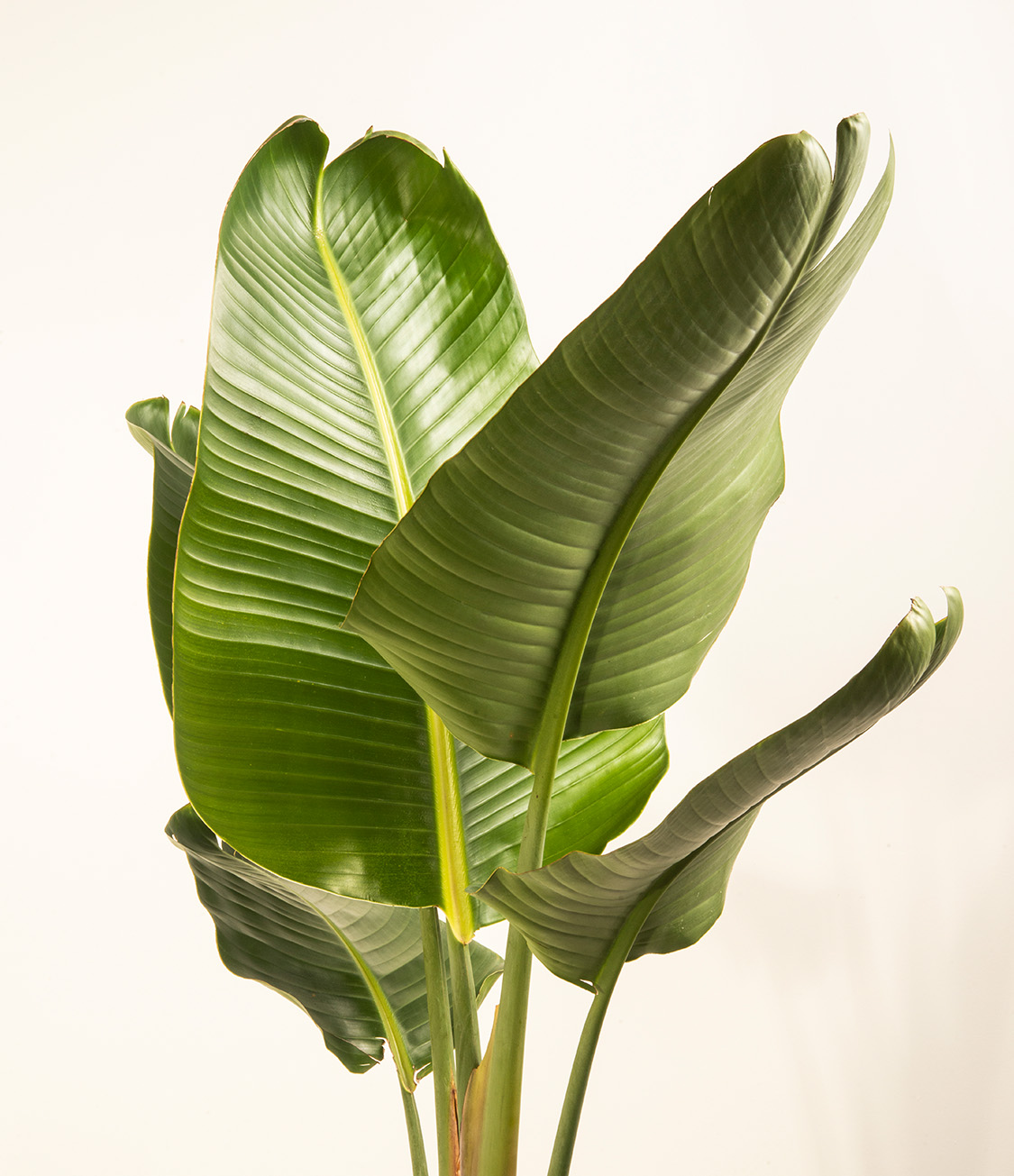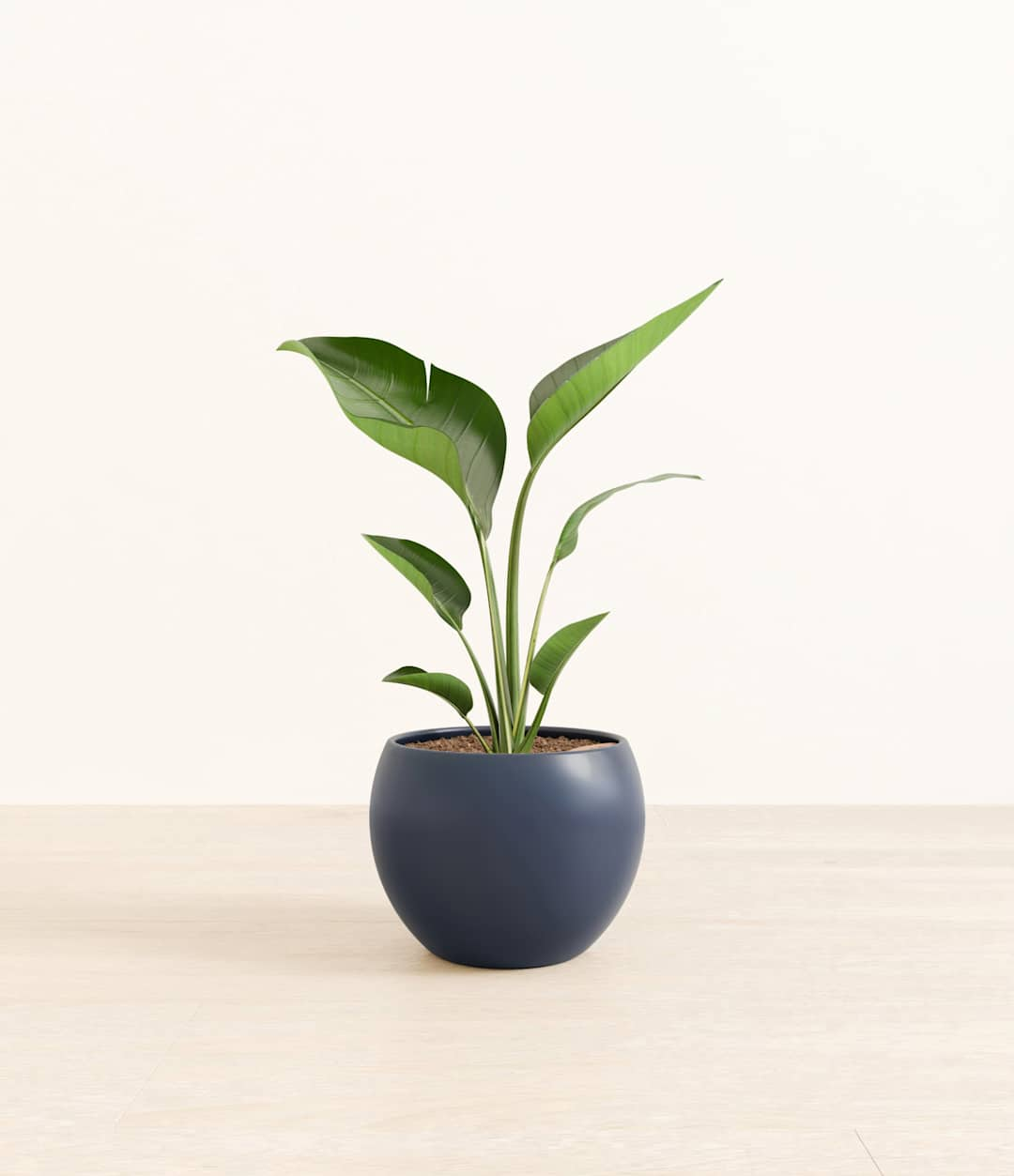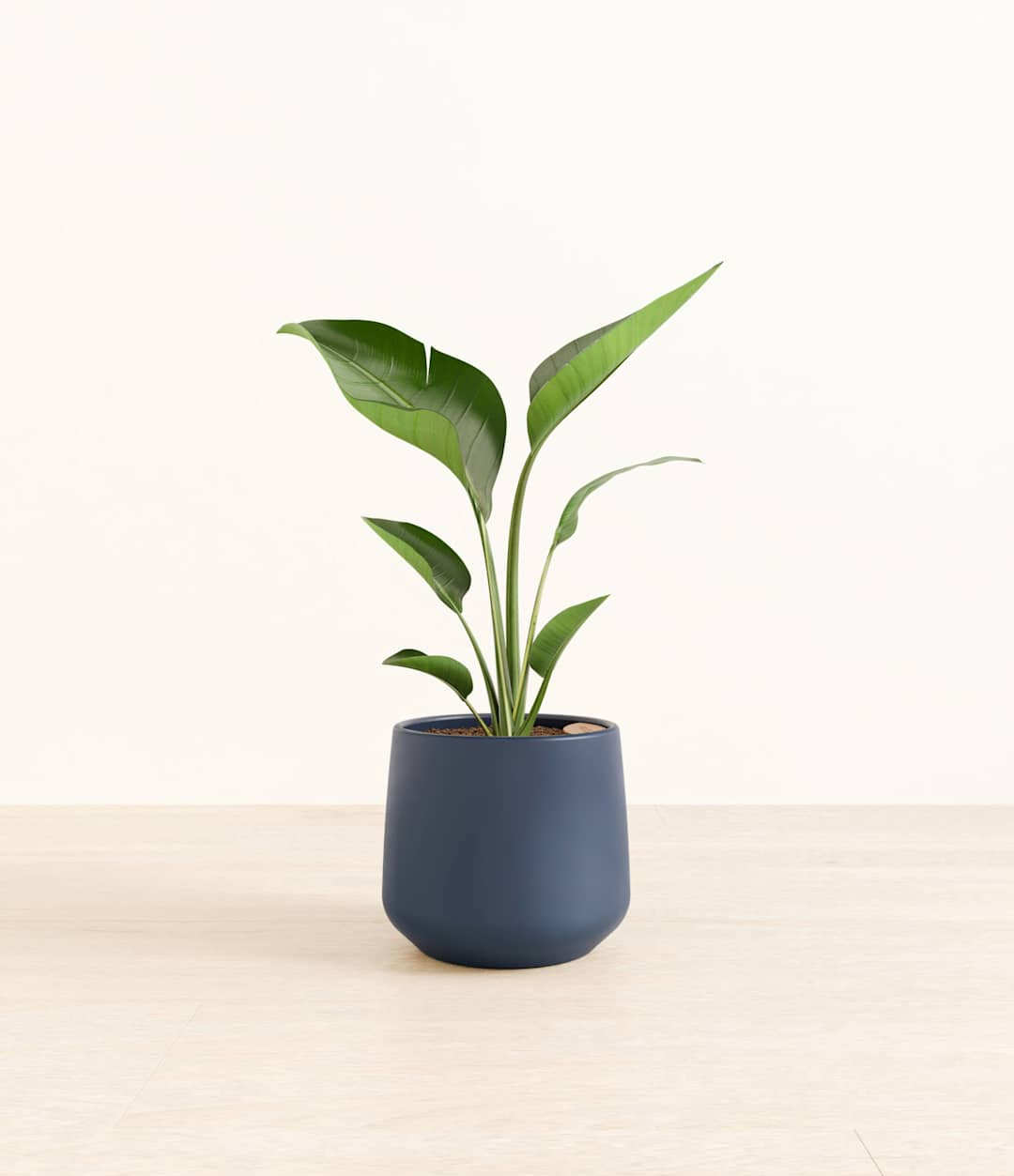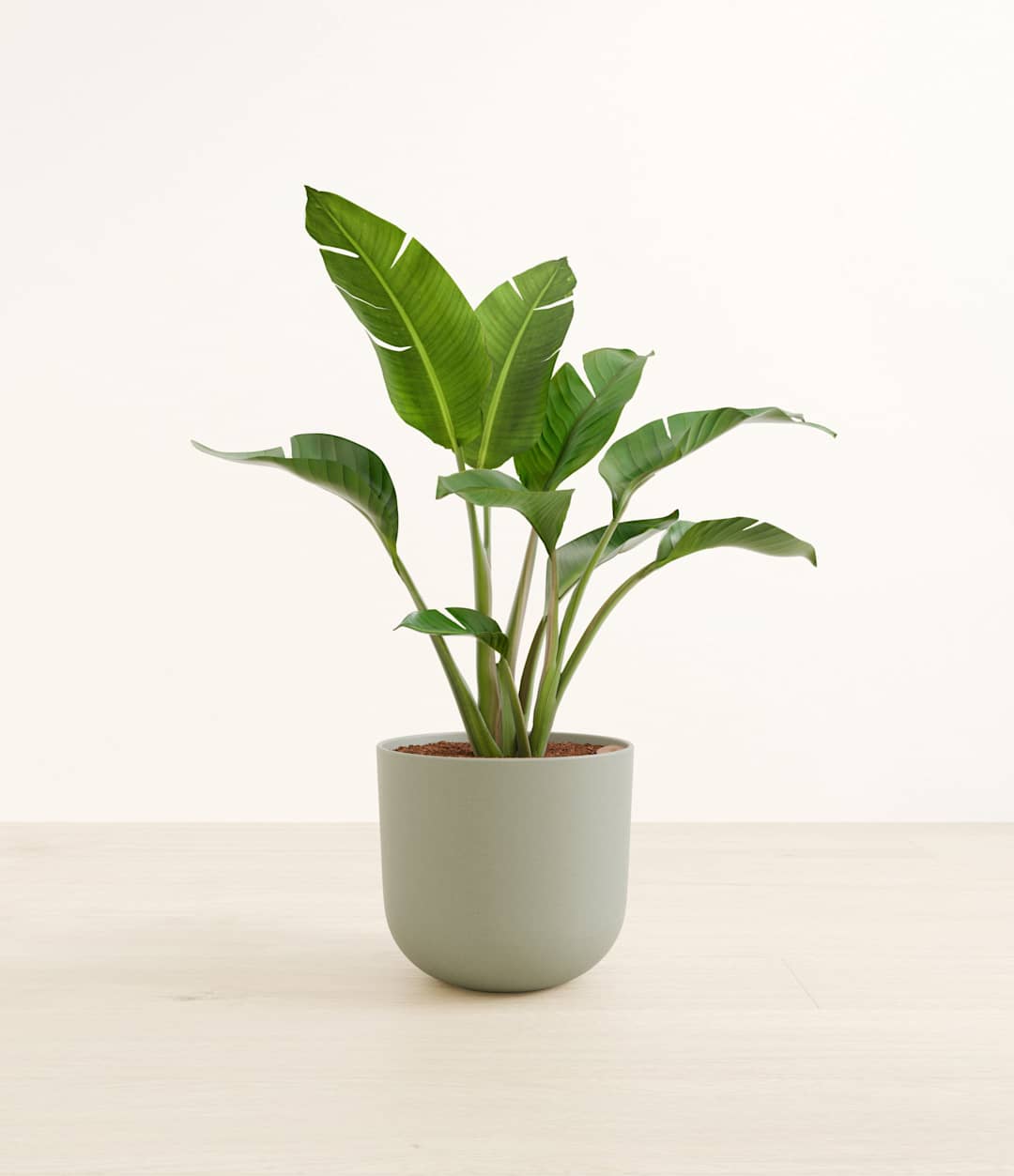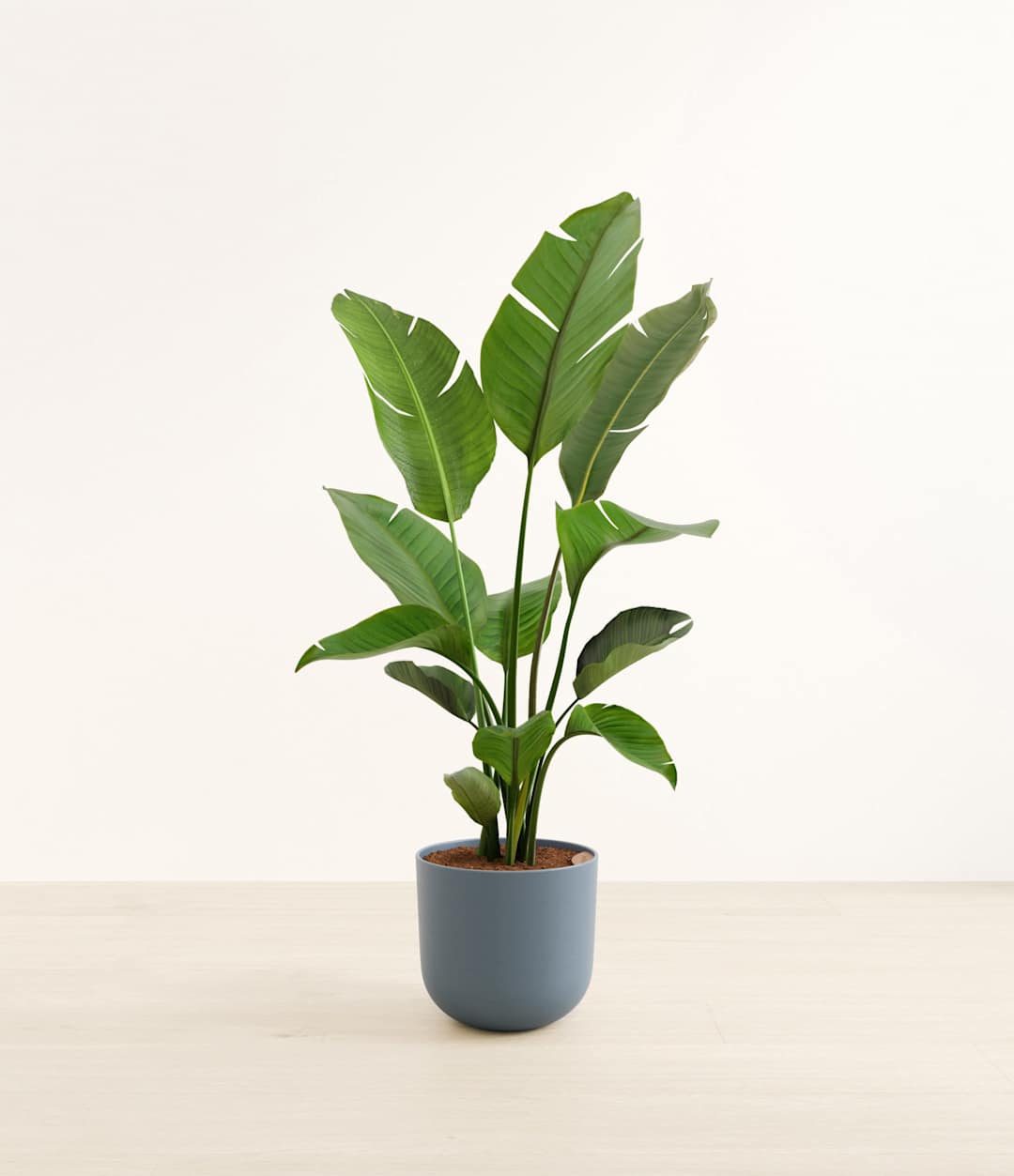How to Care for White Bird of Paradise
Shop this plantAbout White Bird Of Paradise
Other common names
- Strelitzia nicolai
- Giant White Bird of Paradise
- Wild Banana
How Often Should I Water My White Bird Of Paradise?
With easyplant, watering your white bird of paradise is simple. Make sure to check the easyplant reservoir once a month and fill it when empty, and you're all set!
White Bird of Paradise Light Requirements
White Bird Of Paradise Plant Care
How Big Do White Bird of Paradise Plants Grow?
White Bird of Paradise plants grow very slowly, with new leaves emerging about once a month, less so in winter. The plant leaves grow from the center, from which pups may also emerge. White Bird of Paradise will grow approximately three feet wide and five feet tall indoors. After several years, they may reach heights of up to eight feet. It takes about five years for the Strelitzia Nicolai to reach full maturity.
Temperature & Humidity
The ideal temperature for the White Bird of Paradise is between 60˚F and 80˚F (16˚C and 27˚C), though they can tolerate temperatures as low as 32˚F. Avoid exposing the plant to any temperatures lower than 29˚F. When the sun goes down, temperatures naturally drop, so an ideal temperature for the evening is between 50˚F and 55˚F (10˚C and 13˚C). Wherever you place your plant, keep it away from heat or cold sources like radiators, AC vents, droughts, heaters, etc. Because White Bird of Paradise is a tropical plant, they love high humidity. Crispy, brown edges may indicate that your White Bird of Paradise isn't getting adequate humidity. To create a humid environment for your plant, try placing a tray of water near the plant or using a humidifier. You can also group your plant with other plants, use a humidifier, or just place it in a bathroom or kitchen where there is naturally higher humidity. Keep in mind that too much direct sunlight can dry out the plant.
Are White Bird Of Paradise Toxic for Pets & Kids?
Troubleshooting Common Problems with White Bird Of Paradise
Some areas to look out for when caring for the White Bird of Paradise are sunlight, watering, and humidity. The condition of the leaves, in particular, will let you know how the plant is fairing in your home. If you notice leaves of the White Bird of Paradise are wilting or curling out, relocate the pot to a more brightly lit area. Brown spots on the leaves may indicate the temperature is too high and scorching the leaves, so diffuse the sunlight coming in or relocate the plant to an area that isn't as hot but still gets plenty of light. If the edges of the leaves are turning brown and crispy, increase the humidity in the space. If you notice any leaf burn, there may be too much salt in the water or too much direct sunlight. Though not prone to pests and insects, if you notice any on your plant, wipe the leaves with a damp, soft cloth.
Frequently Asked Questions about White Bird Of Paradise Plant
- Is White Bird of Paradise a good indoor plant?
Yes, the White Bird of Paradise (Strelitzia nicolai) is an excellent indoor plant. It is valued for its large, striking leaves and its ability to thrive in bright, indirect light. With proper care, it can add a touch of tropical elegance to any indoor space.
- How tall does White Bird of Paradise get?A White Bird of Paradise will grow to around five feet tall if living indoors. If living outdoors, a White Bird of Paradise can grow as high as twenty feet. These plants are slow growers, so it will typically take around five years before the White Bird of Paradise fully matures.
- Are White Birds of Paradise hard to care for?White Bird of Paradise care is no more taxing than other common house plants. These plants are relatively easy to care for if you pay attention to their condition. Much like other plants, the condition of the leaves will let you know if it's not getting enough sunlight, if the water you're using contains too much salt, or if there is not enough humidity in the space. The roots will let you know if you're overwatering. Periodically checking on your plant can resolve any issue quickly.
